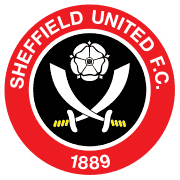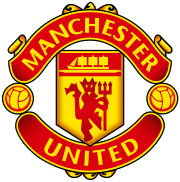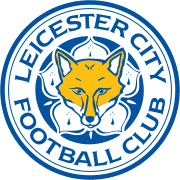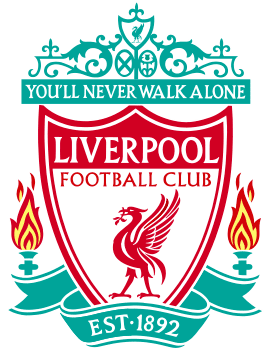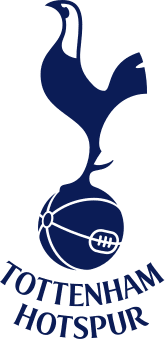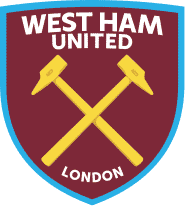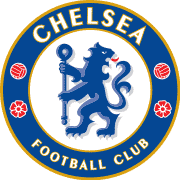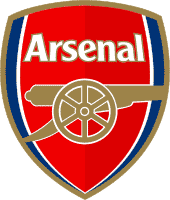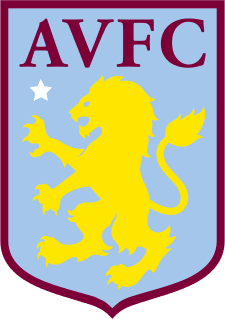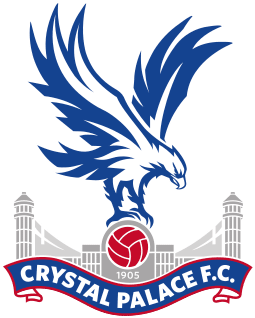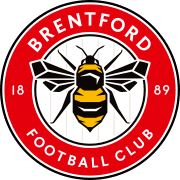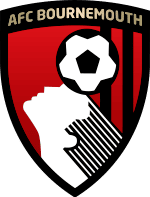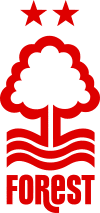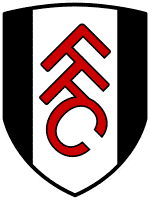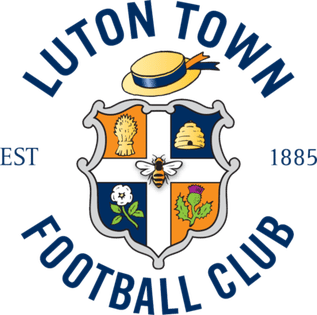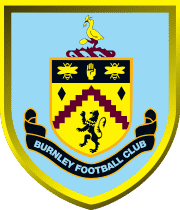Sheffield United FC Tryouts & Club Guide: History, Stadium, Players, and More!

Welcome!
Discover the world of soccer with fcscout.com, your go-to scout for club tryout information, club guides, player profiles, in-depth product reviews, and more. We’re dedicated to exploring and revealing the best in each domain, empowering you with knowledge to make informed choices.
Thank you for being here!
Hi, I’m Carlos! A coach, sports enthusiast, and the founder of FCScout.com.
I fell in love with the game at a very young age like many of you. I’ve been following and playing soccer for many years.
Throughout my career, I always enjoyed helping soccer players chase their dreams, which is why I started this website. I wanted to reach a larger audience outside of my local area and fcscout.com was born.
This website is a platform I will be using to update club pages on any tryouts, stadiums, players, tech, and more from clubs around the world. I also create free recruitment profiles for players looking to have that extra competitive edge when reaching out to clubs.
That’s it. That’s my pitch for you to stick around (or browse the site as you please).
This is already too much text for a “see more” drop-down button thing. If you want to reach out to me, head on over to my contact page 🙂

Sheffield United Football Club is a professional football club in Sheffield, South Yorkshire, England. The club competes in the Premier League, the top division of English football.
Sheffield United FC Youth Development System
Sheffield United FC Academy
Sheffield United’s Academy is responsible for youth development at the club. It has produced such players as Manchester City defender Kyle Walker and defender Phil Jagielka, both England internationals, and also Swansea City defender Kyle Naughton, Burnley full back Matthew Lowton, Leicester City defender Harry Maguire and current club captain Billy Sharp. The Academy building and training facilities in the Sheffield suburb of Shirecliffe were opened in 2002 by then Minister for Sport Richard Caborn. Sheffield United Academy U18s currently play in the Professional Development League at the Shirecliffe ground at Firshill Crescent, and finished as runners-up in the 2011 FA Youth Cup. In addition, SteelPhalt are the sponsor of the Shirecliffe-based Academy, and are also the major sponsor of Sheffield United Women.

As of this writing, there is no trial information on the official Sheffield United website. Please check back at a later date for more updates.
Sheffield United FC Under 23s & 18
Sheffield United U23s currently compete in the Professional Development League, playing home games at various venues, including Bramall Lane and Stocksbridge Park Steels FC. The club have fielded a reserve team since 1893, when the reserves played in ‘Sheffield League Division One’.
To view the full U23 roster, please click here.
To view the full U18 roster, please click here.
Sheffield United FC Recruitment Trials
At the time of this writing, there is no official publishing’s on Sheffield United FC trials. Please come back at a later date while we monitor this club or click here to visit their official news section.
EXPLORE MORE CLUBS!
Explore more professional clubs by continent.
Sheffield United FC History
The first ever Football League was won by Sheffield United in 1898, and the club also took home the FA Cup in 1899, 1902, 1915, and 1925. They competed in the FA Cup finals in 1901 and 1936, but lost both times. They advanced to the semi-finals in 1961, 1993, 1998, 2003, and 2014, respectively. In 2003 and 2015, they competed in the League Cup and made it to the semi-finals. In the 1892–93 season of English football, Sheffield United became the first club in the country to gain promotion from the newly constituted Second Division to the First Division.
In addition, the club was a founding member of the Premier League in the 1992–1993 season, which is also the season in which they scored the very first goal in the history of the Premier League. At Bramall Lane, Brian Deane scored the opening goal in the Blades’ victory over the eventual champions, Manchester United, which resulted in a final score of 2–1. Since the beginning of the club’s history, they have competed in every level of the football league, from the first to the fourth.
They are one of just three other clubs in the history of the football league to have won titles at all four of the highest levels of competition. However, the majority of the club’s existence has been spent in tier 1 competition. The majority of the club’s history has been spent with them playing in striped red and white shirts with black shorts underneath. Their most significant competition comes from Sheffield Wednesday, who they face off against in the Steel City derby.
Stadium
The games that Sheffield United play are held at Bramall Lane, which is located close to the city center. Bramall Lane is the oldest major league ground anywhere in the world, having staged its first game in 1862, which was a match between Hallam and Sheffield Club.
The contest was between two clubs named Hallam and Sheffield. On October 14, 1878, a match between two sides selected from the Sheffield Football Association was played under floodlights at Bramall Lane. This match is considered to be the world’s first floodlit football match. Two generators produced the electricity that was needed for the lights. There were 20,000 people in attendance, and the result was 2-0.

Originally used as a cricket venue, Bramall Lane was leased by the Duke of Norfolk to the Sheffield United Cricket Club in 1855. Sheffield United Cricket Club was established in 1854. On April 30, 1855, the ground was inaugurated with a cricket match, and it gradually evolved into a facility that was used for both cricket and football. It became their primary ground shortly after the Yorkshire County Cricket Club was established in 1863 and remained so throughout the twentieth century. They continued to use the pitch for occasional matches during each season until August 7, 1973, when building work began to convert Bramall Lane into a football stadium specifically designed for use by professional teams.

In recent years, the stadium has undergone development, and following the installation of a corner stand with 3,000 seats in 2006, Bramall Lane has been transformed into an all-seater venue with a capacity of 32,050 that is suitable for the Premier League. The team was formally given permission to extend the stadium once more in March 2009, and the project will be completed in two phases.
The first phase was supposed to involve extending the Kop, which would have brought the maximum number of spectators to the stadium to about 37,000. Additionally, it would have required the removal of the primary supporting pillars and the installation of a massive screen as a component of the stand’s roof. The second phase was supposed to include the extension of the Valad Stand, which was formerly known as the Arnold Laver Stand. This was supposed to bring the overall capacity up to 40,000 seats. If England’s bid were successful, the expansion would have had a secondary goal of making players eligible for selection for FIFA World Cup matches in 2018 or 2022.
This would have been the case only if the bid were successful. However, on December 16, 2009, the Football Association announced that in the event that England’s bid for the 2018/2022 World Cup is successful, any games that are played in Sheffield will be held at the Hillsborough Stadium, which is home to Sheffield Wednesday. In light of this, United’s former chief executive, Trevor Birch, made it known that all planned ground improvements had been placed on hold until the club was able to reclaim and maintain Premiership status. This was done in light of the fact that the club had lost its Premiership status.

In 2015, a revised application for the rebuilding of Kop was submitted; if approved, this would bring the stand’s total capacity up to 3,215 seats, which is more than it now has. In 2017, additional designs for the expansion of the corner between the Kop and the South Stand were released. These plans called for the construction of residential flats as well as a new club store in that location.
Crest
The majority of Sheffield United’s history has been spent playing in striped red and white uniforms; however, the team originally wore white shirts and blue shorts. During the 1890–1891 season, they donned an all-white uniform for a few games before switching back to the red and white stripes the next season. The striped pattern made a comeback during the 1892–1893 season, and in 1904, black shorts replaced the blue ones. The shirts stayed mostly unchanged until the collars were first taken off in the year 1955. After that, they were replaced by V-necks until the 1966–1967 season (during which white socks were also worn), and after that, the neck style became more variable.

The original red and white stripes were used until the 1974–1975 season, when elements of black were added. These components remained a part of the kit until the 1979–1981 and 1982 seasons. This one was white with a red breast and thin stripes down either side; it was designed to accommodate the insignia of the club’s primary sponsor, which was a local furniture company called Cantor’s. This one was worn by the women’s team. This was to be replaced by a striped outfit, with the sponsor’s name inscribed vertically along a white stripe that ran over the left-hand side.
Bentley’s used this kit from 1981–1982 and Renault wore it from 1982–1983. Their kits continued to feature striped shirts, albeit with a variety of aids to accommodate their sponsors. These aids included a yellow square for Laver from 1988–1992 (the shirt worn during the 1990–1992 season also featured narrow black stripes through each white stripe), and a black hoop, also for Laver, during the 1994–1995 season. After that, the team tried out a diamond-patterned uniform, but it was met with such much disapproval that the following year, the club went back to using stripes. Since then, the team has worn shorts that are black with the exception of the seasons 2002–2005, during which white and later red shorts were worn. Socks have been black with a variety of trims, and the team has worn red and white stripes. In addition, once every few seasons the club will choose to add thin black stripes in between the red and white stripes on the jersey.
The home colors of Sheffield United served as an influence for the shirt worn by Derry City, which is an Irish team. In 1934, while Billy Gillespie was the manager of Derry City, the team decided to adopt the stripes in honor of Gillespie’s accomplishments with Sheffield United. This decision was made in 1934. The 1891–92 season was the first time that a crest was displayed on the jersey. At that time, a red crest was displayed on the white shirt; however, this crest was removed the next year. From 1965 until 1977, Manchester United used the coat of arms for the city of Sheffield as their club symbol. In 1977, former manager Jimmy Sirrel presented a new crest, which had supposedly been drawn more than 20 years earlier by former player Jimmy Hagan.
This comprised of a white Yorkshire Rose over a black backdrop with a white Yorkshire Rose above it and two crossed swords, or blades, as the club is also known, in white. This is encircled by a crimson ring that has the words “Sheffield United F.C.” inscribed around the top and “1889” written underneath it, which is the year that the club was founded. There have been a few very minor adjustments made to this over the years. From 1987 to 1990, players wore shirts with a straightforward black embroidered crest. From 1992 to 1999, players wore shirts with an all-white crest on a red-edged black shield. However, in 2000, the team went back to its original design.
